A complete guide to personalization engines
Published on May 29, 2025/Last edited on November 11, 2025/18 min read
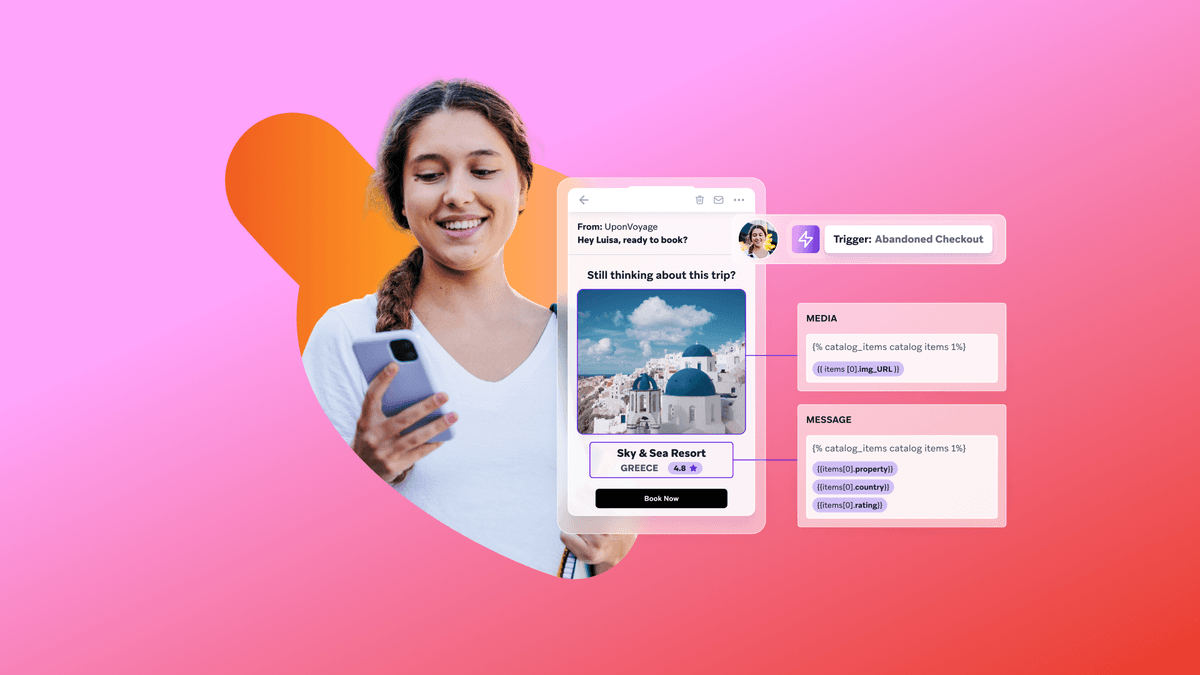

Team Braze
Consumers expect a personalized experience every time they interact with a brand. In fact, 80% of consumers say that personalized experiences are at least somewhat important when making purchases. That might mean being greeted by name in an email, receiving a product recommendation that actually makes sense, or having their past behavior inform their next interaction.
But those basic touches aren't enough anymore. To truly connect with customers—and drive long-term loyalty—brands need the ability to personalize experiences in a way that feels dynamic, relevant, and consistent across every channel. And that’s where a personalization engine becomes essential.
A personalization engine uses real-time customer data, behavioral cues, and predictive analytics to tailor messages and experiences at the individual level. For brands with ambitious growth goals, this kind of scalable, intelligent personalization is a strategic must.
In this guide, we’ll break down what a personalization engine is, how it works, and how the right platform can help brands deliver meaningful, cross-channel customer engagement. We’ll also explore key benefits, use cases, and real-life examples to show you what’s possible when personalization moves beyond the basics.
Key topics we’ll cover:
- What is a personalization engine and how does it work?
- Types of personalization engines and when to use them
- Key benefits of using a personalization engine
- How personalization engines integrate with your existing marketing stack
- What is the difference between a personalization engine and a recommendation engine?
- Real-world applications of personalization engines
- Final thoughts on choosing a personalization engine
- FAQs about personalization engines
What is a personalization engine and how does it work?
A personalization engine (or platform) is software that businesses use to collect and analyze customer data to create personalized customer experiences. A strong customer engagement platform—particularly one that includes built-in personalization powered by artificial intelligence (AI)—can act as an effective personalization engine.
Typically, a personalization engine gathers behavioral information, such as purchase history and website or app interactions, alongside demographic data, brand loyalty insights, and information from other departments like customer service or sales teams. The more comprehensive and higher-quality the data the engine collects, the more accurately it can use that data to deliver personalized messaging across email and mobile web channels.
A personalization engine continually learns from the data it collects and the human behaviors it is analyzing, so it knows—for instance—when a customer is likely to make a purchase. It can then send the right message at the right time on the right channel, encouraging them to finish the transaction. It also can tell when a customer is likely to churn and catch them before they do with messages that will resonate and entice them to stay.
By leveraging AI, personalization engines automate complex processes, allowing marketers to personalize at scale. For instance, Braze AI Item Recommendations uses artificial intelligence to create tailored product recommendations based on each customer's purchase history and individual attributes. These recommendations can be seamlessly integrated into campaigns, helping brands deliver the most relevant products or content to each customer.
Features like Braze Personalized Paths also enable marketers to automatically tailor message content, creative, channel, or offers based on what an individual customer is most likely to engage with during their journey—all with a simple toggle.
What data does a personalization platform use?
A personalization platform typically draws from diverse sources of customer data, including zero-party data (explicitly provided by customers), first-party data (collected directly through customer interactions), and data from trusted third-party integrations.
Common examples include:
- Real-time website and app interactions
- Customer preferences gathered directly through surveys or profile setups (zero-party data)
- Transactional and purchase history data (first-party data)
- Loyalty status or lifecycle stage information
- Contextual data such as location, language, and current device
- Insights from other teams, such as Customer Support, Sales, or product interactions
Combining these data sources and using real-time data also means personalization can happen in the moment—responding to a user’s latest click, scroll, or action instead of relying only on historical patterns.
Six types of personalization and when to use them
When we talk about personalization, we’re also talking about relevance, and not every type of personalization is relevant to all customers. Indeed, the very idea of personalization means that it’s customized and not a one-size-fits-all approach.
Let’s look at six of the most common types of personalization and when brands might use them.
1. Name-based
The one we’re all the most familiar with. When we receive a message that says “Hi John”, or “Hi Laura”, instead of just ”Hi”, or “Hi customer”, it feels more personal. It is, however, the most basic level of message customization—and, unfortunately, many brands don’t go much further. This is the least that customers expect and there’s so much more brands can offer.
2. Location-based
Using the physical location of a recipient, this type of personalization can target customers in a particular place or region (e.g. California or London’s Hackney neighborhood), without bothering other customers that the message might not be relevant to. For example, an offer that only applies to people at one store location can be communicated to those nearby and not sent to those who are too far away for it to be of use.
3. Language-based
An essential type of personalization for global companies where messages can be sent in different languages. All the variants can be added and then, for example, an English version sent to English speakers and a French version to French speakers. It’s a great way to keep offers from getting lost in translation.
4. Event- and attribute-based
Each customer is unique and their preferences and behavior are individual to them. Event- and attribute-based personalization allow brands to add other customer-related attributes to their messaging. For example, knowing their shoe size may trigger a push notification when a certain size pump is back in stock. Or maybe they’ve abandoned a cart with the same product three times this week, so the brand can let them know that it’s on sale or offer a one-off discount.
5. Dynamic content
When brands want their messages to be responsive and adapt to external events or something outside of your data or control, dynamic content is a dream come true. Say there’s a storm on the way for a certain part of the country and brands want to be able to pull in that information so that the messages they send are more suited at that moment. Dynamic content—or Connected Content, as we call it—allows for power, flexibility, and complexity in their communications.
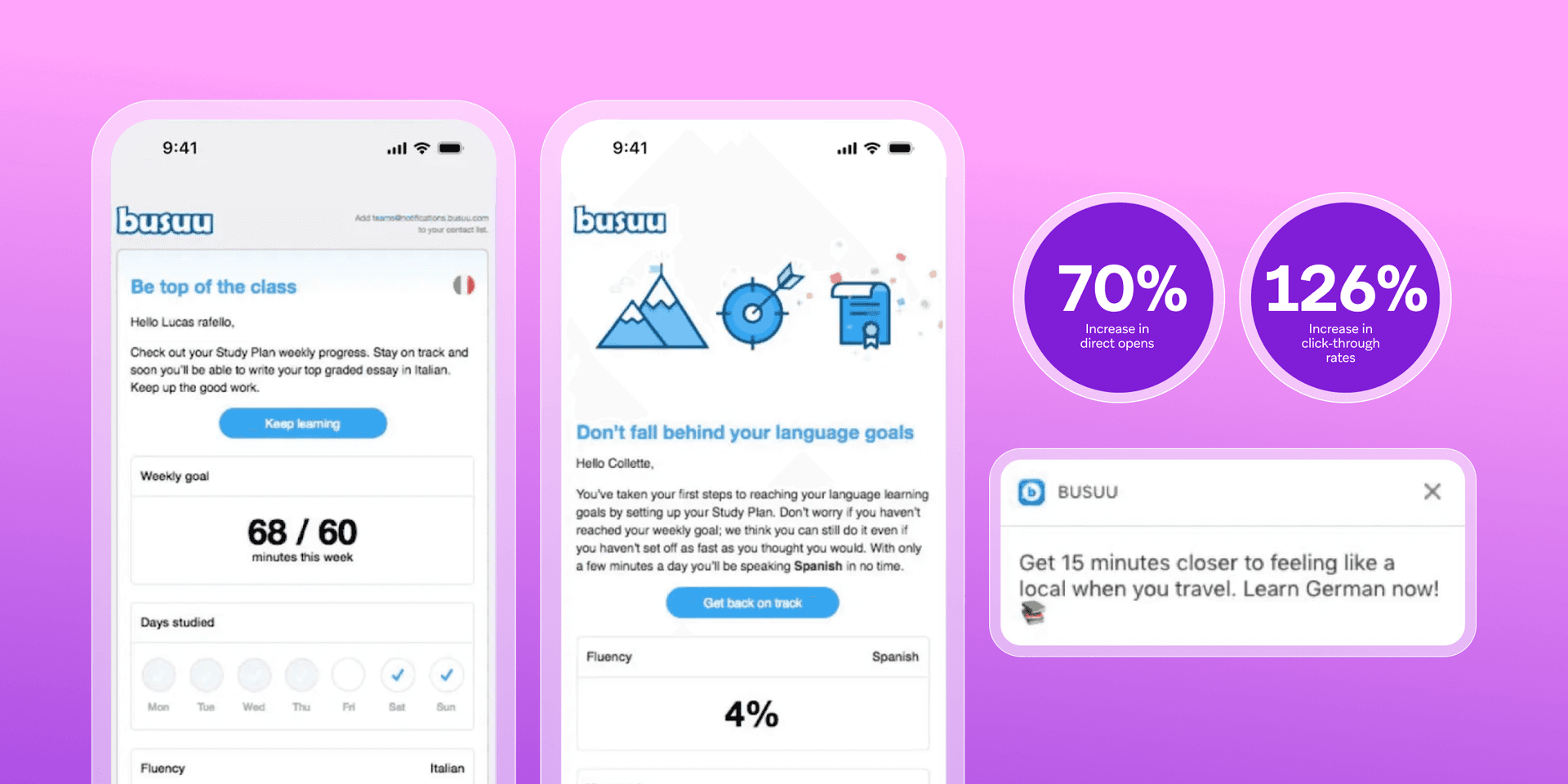
6. Delivery time
Messages received during a given user’s personal high-engagement times will tend to feel less intrusive—and this type of personalization means brands can send messages at times when a customer is more likely to open them. Each user can be different, so that might mean one person gets a given message on their morning commute at 8:15 am and another when they’re home for the day at 8 pm.
Eight key benefits of using a personalization engine
When personalization is done well, it can lift revenue by 10–30%, increase engagement, and strengthen long-term customer relationships. A personalization engine makes that kind of impact possible by turning rich customer data into relevant messaging at scale.
Here are eight key benefits of using a personalization engine:
1. Maximize profit with intelligent recommendations
AI makes personalization scalable. It can predict customer preferences and serve up relevant suggestions, sometimes before the customer even realizes they need them. BrazeAI™ helps brands connect the dots between behavior and intent, surfacing products or content that align with each user’s needs.
2. Drive better experiences with your brand
Whether it’s email, SMS, the WhatsApp Business Platform, in-app messaging, or push notifications, being able to communicate across platforms is essential. But relevance matters more than reach. Location-aware push notifications or interest-based offers at just the right time can create stronger emotional connections and drive better results.
3. Unlock recommendations that are directly integrated into your tech
A personalization engine, when paired with the right personalization tools and technologies will not only collect and analyze customer data, but do so in a continuous manner and track performance. This means that data is up to date when you need it—so making decisions and adjusting your marketing plans becomes a whole lot easier. Campaigns can be added, amended, and designed with access to the latest information to help ensure they are particularly relevant. They can be sent to different customers to support increased relevance and this can all be implemented quickly and efficiently.
4. Break down team silos to improve efficiency and performance
A common gripe of modern marketing teams is that departments are working in silos—each one with its own set of data and goals. A personalization engine helps to bring all of the information together and, when used as part of a customer engagement platform, brings everything into one place for use in different ways and for different goals. This creates a single source of truth that can support a more aligned working process, and also leads to more cohesive experiences for customers that enhance brand equity.
With AI and advanced automation, the elements that would take a long time if done manually can now be done in an instant and at scale. This ability to act quickly on real-time data is one of the stand-out benefits of a personalization engine.
5. Drive revenue with personalized messages to customers
Effective personalization adds real value—and missed relevance can mean missed revenue. According to Accenture, brands lose up to $1 trillion annually due to poor personalization. With a personalization engine, you can deliver tailored content that resonates, drives clicks and encourages conversion.
6. Create more engaging customer experiences
When customers feel understood, they’re more likely to stick around. A personalization engine helps brands craft intuitive, frictionless journeys that adapt to each user. Whether they’re browsing, buying, or bouncing between devices, relevance is maintained every step of the way.
7. Optimize customer journeys to drive the highest likelihood of conversions
Key moments in the customer journey can be automated to create a highly personalized experience. Using a personalization engine and integrated tools, these key moments can be optimized. With Braze Personalized Paths, for example, marketers can easily match each customer with the message copy, creative, or channel they are most likely to engage with at any step in a given journey. Marketers can also leverage Braze Canvas to build dynamic and responsive customer journeys—without having to write code. This is a way of orchestrating and visualizing the conversation they’re having with each one of their customers
8. Drive next-best actions
Predictive insights help marketers take action before it’s too late, shifting outcomes in their favor. With the Braze Predictive Suite, brands can automatically identify users at risk of churn—or those most likely to take a key action––and engage them before it’s too late.
How personalization engines integrate with your existing marketing stack
Even the smartest personalization platform won’t drive results if it can’t integrate with the rest of your marketing tools. To make personalization work across channels and teams, you need systems that connect and can stream data.
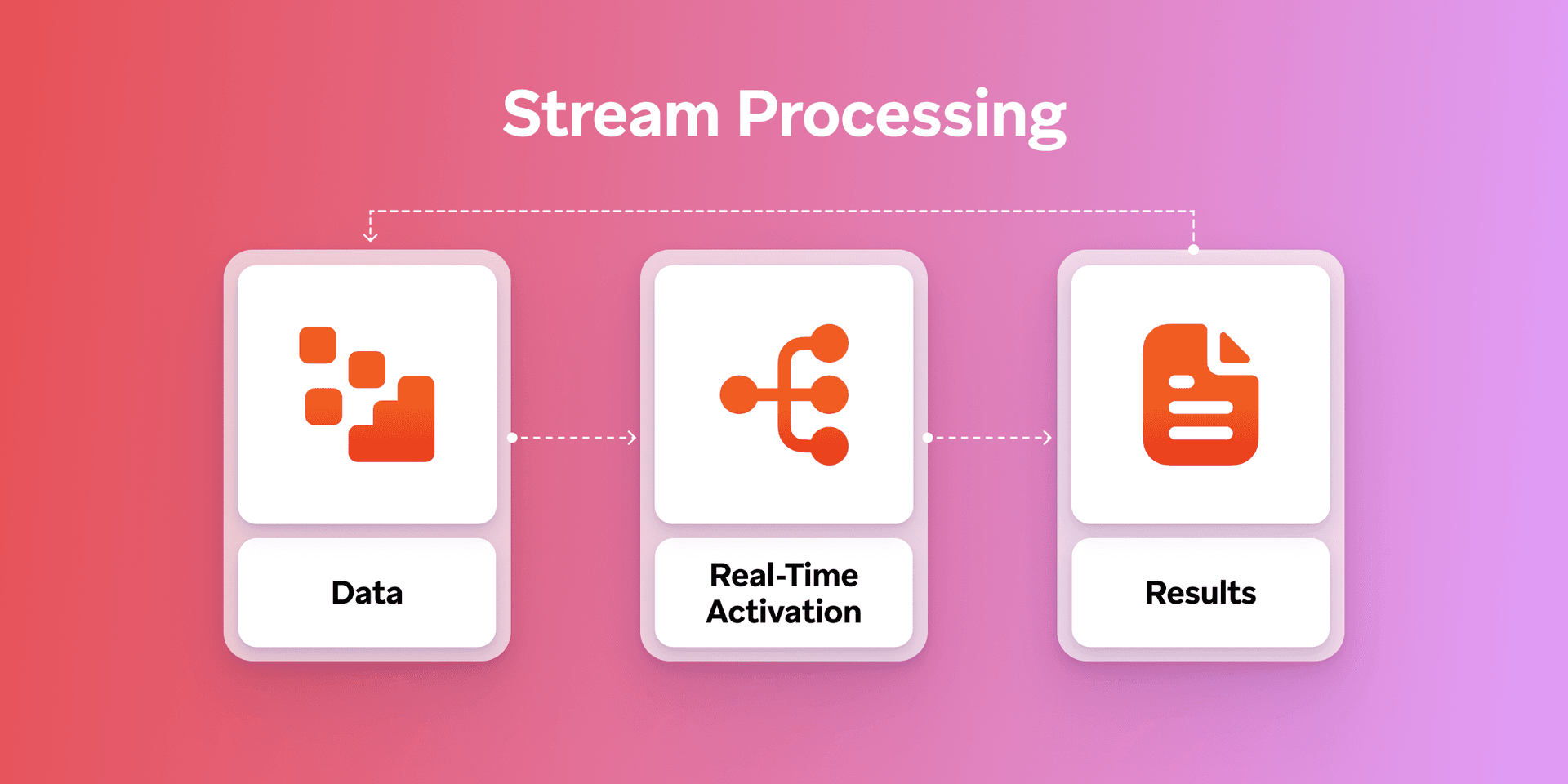
Integration with customer data platforms, email service providers, customer relationship management systems, and customer engagement platforms
A personalization engine works best when it’s connected to reliable sources of customer data. That often means syncing with:
- Customer data platforms (CDPs) that unify behavioral, transactional, and demographic data
- Email service providers (ESPs) that send email campaigns
- Customer relationship management (CRM) systems that capture sales and support interactions
- Customer engagement platforms (CEPs) that can bring it all together to message customers and build relationships across a wide variety of channels based on diverse data sources
When these systems speak the same language, your marketing becomes much more adaptive and accurate. Additionally, a platform might function as your personalization engine, if it has the right capabilities.
Real-time data syncs and open APIs
To personalize at the moment it matters, your engine needs fresh data, not stale exports. Look for platforms that offer real-time syncing, event streaming, and open APIs. This allows you to:
- Trigger messages instantly based on in-the-moment behavior
- Personalize experiences across all platforms without lag
- Feed data back into your system to keep learning and improving
For example, Braze supports bi-directional integrations with leading CDPs and offers flexible APIs to make orchestration seamless across your stack.
Avoiding data silos through unified platforms
Siloed data doesn’t just slow teams down—it creates fractured customer experiences. A connected personalization engine eliminates those silos by acting as a central decision-making hub. When integrated into a platform like Braze, it becomes part of a larger ecosystem that supports:
- Cross-channel journey orchestration
- Real-time personalization
- AI-based personalization based on relevant data
That means less tool-hopping for your team and more cohesive experiences for your customers.
What is the difference between a personalization engine and a recommendation engine?
While often used interchangeably, a personalization engine and a recommendation engine aren’t quite the same thing. Both aim to make customer experiences more relevant, but they do it in different ways, with different scopes.
A recommendation engine typically focuses on suggesting specific products, content, or actions based on a user’s past behavior or preferences. Think: “You might also like…” on a product page, or suggested shows on a streaming platform. These engines are often built around algorithms that analyze browsing history, purchase patterns, or similarities with other users.
A personalization engine, on the other hand, is designed to tailor entire experiences across multiple channels, not just recommend items. A personalization engine might adjust:
- The copy or creative shown to a customer
- The timing or channel of a message
- The sequence of touchpoints in a journey
- The offers or incentives used to drive conversion
If you’re looking to build more holistic, scalable customer experiences, a personalization engine offers the flexibility and depth needed to move beyond recommendations and into full-funnel engagement.
Real-world applications of personalization engines
Now that we’ve explored how personalization engines work and the value they can deliver, let’s take a look at what that impact looks like in action. The following case studies show how real brands are using Braze personalization tools—including AI-powered predictions and dynamic content—to drive measurable results.
Each example highlights a different use case, but they all have one thing in common: personalization that goes beyond first names and merge tags. These brands are using behavioral data, automation and intelligent messaging to connect with their customers more effectively—and more efficiently.
Fit for the future: 8fit uses BrazeAI™ to predict subscribers—and the results flex
8fit is a global health and wellness app offering personalized workouts, meal plans, and mindfulness tools. With over 40 million downloads, their goal is to turn casual browsers into long-term subscribers by delivering the right message at the right time.
The problem
8fit wanted to increase paid subscriptions without resorting to broad discounts or blanket campaigns, but lacked visibility into which users were most likely to convert.
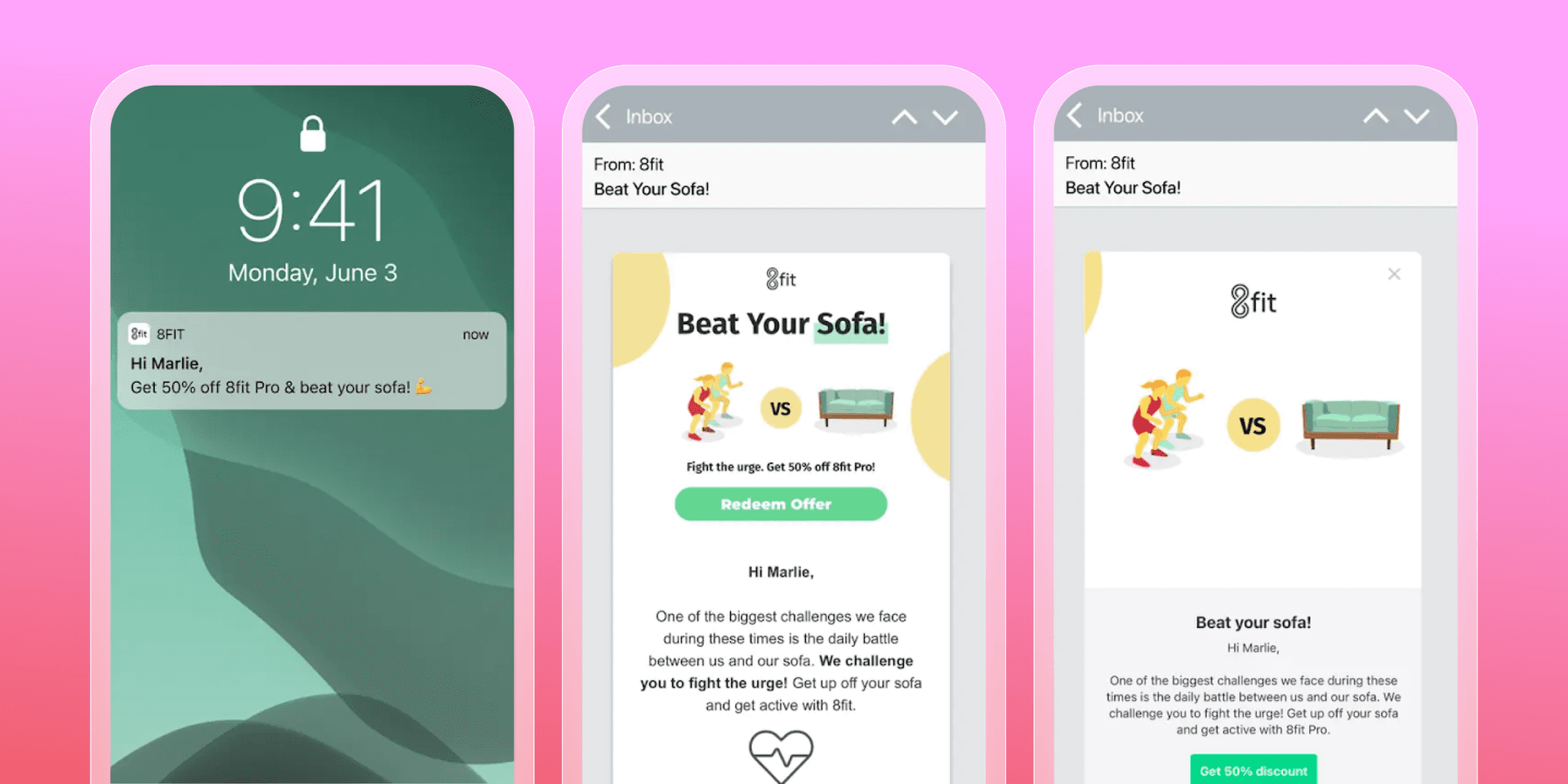
The solution
Using the Braze Predictive Suite, 8fit segmented users based on their Purchase Likelihood Score, a machine learning-powered prediction model. Instead of sending the same offer to everyone, they used this data to personalize the level of discount based on how likely each user was to subscribe. Campaigns were delivered via email, push, and in-app messaging—all managed in the Braze platform.
The results
- 3.75X higher conversion rates for high-likelihood users vs. random cohorts
- Saved 100,000 emails per week by excluding unlikely converters—with no impact on results
- Improved campaign efficiency, reduced messaging fatigue and increased ROI
This is a clear example of a personalization engine in action, where behavioral data and AI predictions are used to tailor messages, offers, and timing to each individual customer at scale.
Listings that land: OneRoof uses Intelligent Timing and dynamic content to drive a 218% click surge
OneRoof is a New Zealand-based property platform that helps people find, value and better understand homes across the country. With features like property estimates, local insights, and school zone data, their mission is to make property decisions easier and more personalized for every user.
The problem
OneRoof wanted to improve the relevance and engagement of their property listing emails—but they were limited by manual workflows and a lack of personalization. Their team couldn’t easily segment audiences, personalize content by location, or send messages at the best possible time. Instead, they were sending generic emails and missing opportunities.
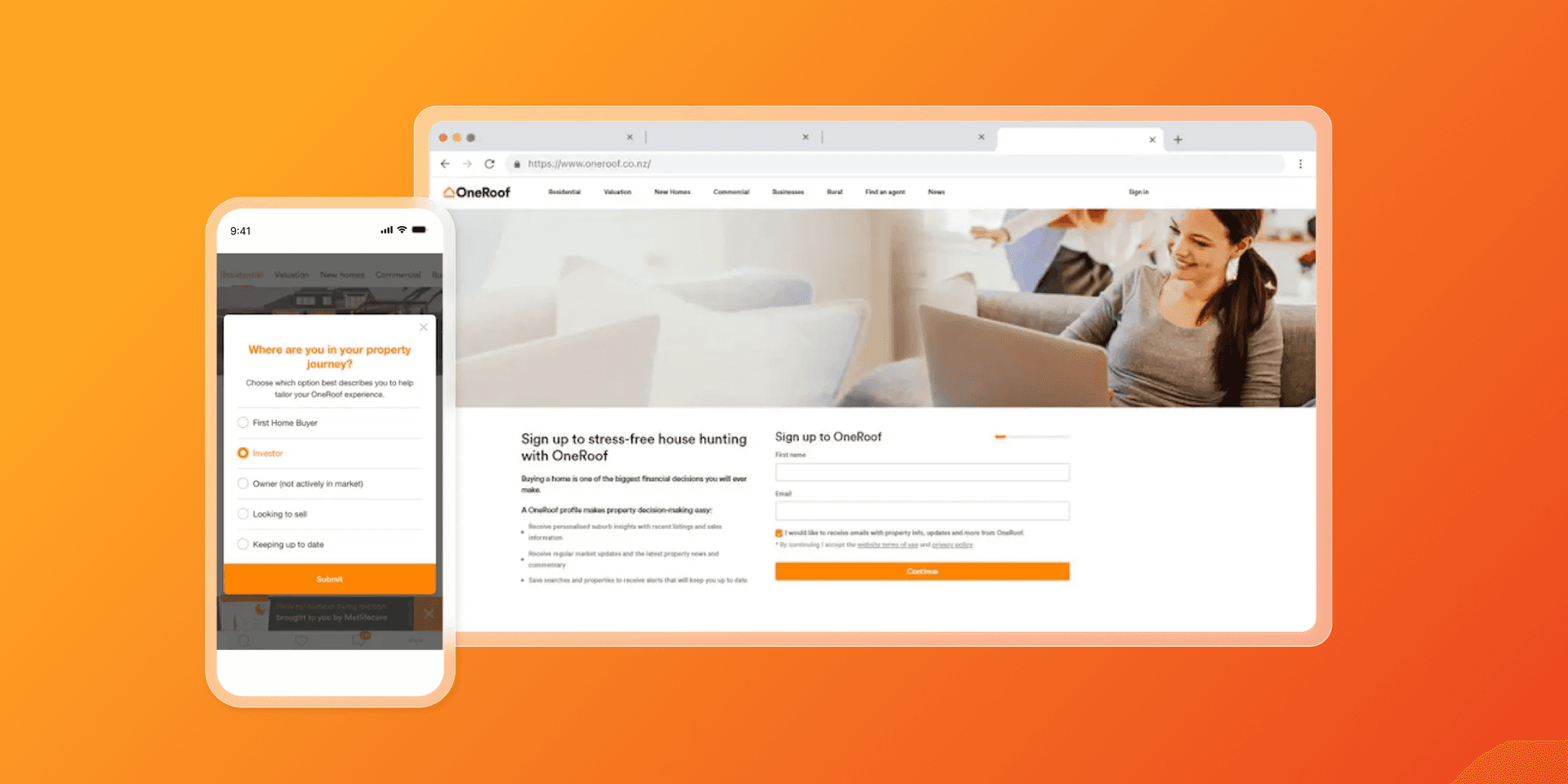
The solution
OneRoof turned to Braze Intelligent Timing and dynamic content tools to power more tailored, behavior-driven communications. They started by building a Profile Builder to capture declared preferences—like suburb, buyer/seller status, and price range. Then they used machine learning and Connected Content to create personalized emails based on these profiles and customer behaviors.
Key features used:
- Dynamic newsletter content based on declared or inferred suburb
- Optimized delivery times using Braze Intelligent Timing
- Localized reports and listings via Liquid personalization
- Cross-channel delivery through email and in-app messages
The results
- 23% increase in email click-to-open rate
- 218% uplift in total clicks to listings
- 57% increase in unique clicks
- 77% completion rate on new user Profile Builder
- 50+% user growth year over year.
This case shows how a personalization engine can turn static email campaigns into dynamic, data-driven experiences. By integrating customer preferences, behavioral signals, and send-time optimization, OneRoof moved from generic messaging to truly personalized property discovery, at scale.
One platform to serve them all: Majid Al Futtaim powers 10 brands and millions of users with Braze
Majid Al Futtaim is a diversified retail and hospitality group serving millions of customers across the Middle East, Africa, and Asia. Its SHARE Rewards Programme spans over 10 brands and drives engagement, loyalty, and long-term customer value across the full group portfolio.
The problem
The company needed to migrate more than 40 lifecycle campaigns for the SHARE Rewards Programme—and eventually over 100 communications across 10+ brands—to a single, unified engagement platform. That meant centralizing data, reducing silos and preserving seamless, personalized messaging for more than 5.6 million users, all while preparing for deeper cross-channel engagement.
The solution
By migrating to Braze, the SHARE team was able to integrate data across departments, design dynamic journeys using Canvas and personalize at scale with AI-powered features like:
- Intelligent Channel and Intelligent Timing
- Action Paths and Conversion Events
- Connected Content to populate app tiles with personalized offers
- Content Cards to create an in-app notification center
- A/B testing, gamified experiences, and survey tools to drive engagement and gather real-time feedback
A modular email design system was also created to speed up campaign creation and reduce manual effort.
The results
- More than 5.5 million customers reached each month
- 110+ automated campaigns launched by the end of 2022
- 1,000+ unique communications executed in 8 months
- High open and click-through rates across email, in-app and mobile channels
This case illustrates the power of a personalization engine to unify marketing infrastructure across brands and business units, enabling consistent, tailored messaging at scale, with automation and intelligence baked into every step.
Slices of intelligence: Pizza Hut serves up 30% more transactions with Braze
Pizza Hut, one of the largest quick service restaurant (QSR) chains in the world, operates more than 18,000 restaurants globally. They deliver hot, tasty food and memorable service—both in person and through digital channels. To meet that standard, they needed customer communications that were just as personalized and satisfying as their pizza.
The problem
Before switching to Braze, Pizza Hut’s CRM program relied on a legacy platform that lacked native mobile channels and a unified customer view. Personalization was limited, testing was slow and message relevance suffered. They knew they needed more flexible tools to scale personalization and improve campaign performance across email and SMS.
The solution
Pizza Hut adopted Braze and immediately began using machine learning to optimize their email strategy. They launched a proprietary multi-armed bandit (MAB) test—something that wouldn’t have been possible with their old system. Using the Braze platform’s cross-channel capabilities, Liquid personalization, and real-time data ingestion, the team was able to build hundreds of email variants and test them automatically.
They also added push notifications and in-app messages, expanding their reach while keeping each touchpoint tailored to individual preferences and behaviors.
The results
- 30% increase in transactions
- 21% lift in revenue
- 10% increase in profit
- Faster optimization cycles and stronger multichannel performance
This is a powerful example of a personalization engine fueling real business impact. By combining machine learning with cross-channel orchestration and dynamic personalization, Pizza Hut was able to scale smarter, send more effective messaging—and boost ROI in the process.
Final thoughts on choosing a personalization engine
Personalization has come a long way from “Hi [First Name].” Today’s consumers expect experiences that reflect who they are, what they care about, and where they are in the moment. And brands that meet those expectations—across channels, in real time—are the ones that can win.
A personalization engine can help you do more with your data, your team, and your strategy. From predictive recommendations to dynamic content and AI-driven journey orchestration, the right engine brings personalization from idea to execution, without sacrificing speed or scale.
And when that personalization engine is built into your customer engagement platform, as it is with Braze, you get the best of both worlds—smarter, faster personalization, embedded into every channel and journey campaign. It’s about creating a connected experience every time your customer interacts with your brand.
We surveyed 2,300 marketing leaders across 18 countries to learn what’s working for top-performing brands, what the future of customer engagement looks like, and actionable solutions to the strategic challenges they present.
FAQs about personalization engines
Yes, a personalization engine can improve customer retention. By delivering relevant content, timely recommendations and tailored messaging, brands can build stronger relationships and keep customers engaged over time.
Most businesses can benefit from personalization—but the impact depends on how often you engage with your customers. If your brand relies on ongoing interactions, personalized messaging can help drive repeat engagement and long-term value.
Yes. The best personalization engines are designed to work across email, mobile, web and more. For consistent, cross-channel messaging, it’s best to use a customer engagement platform that unifies data and delivery from one place.
A recommendation engine suggests specific products or content based on user behavior. A personalization engine does more—it adapts full experiences across channels, tailoring timing, creative, and content delivery based on data and predictions.
Related Tags
Be Absolutely Engaging.™
Sign up for regular updates from Braze.
Related Content
View the Blog
A day in the life of a data scientist on the BrazeAIᵀᴹ forward-deployed engineering team

McKay Jensen

The new inbox reality: How iOS changes are reshaping email marketing

Aparna Prasad

Experience optimization: Turning data insights into better journeys
